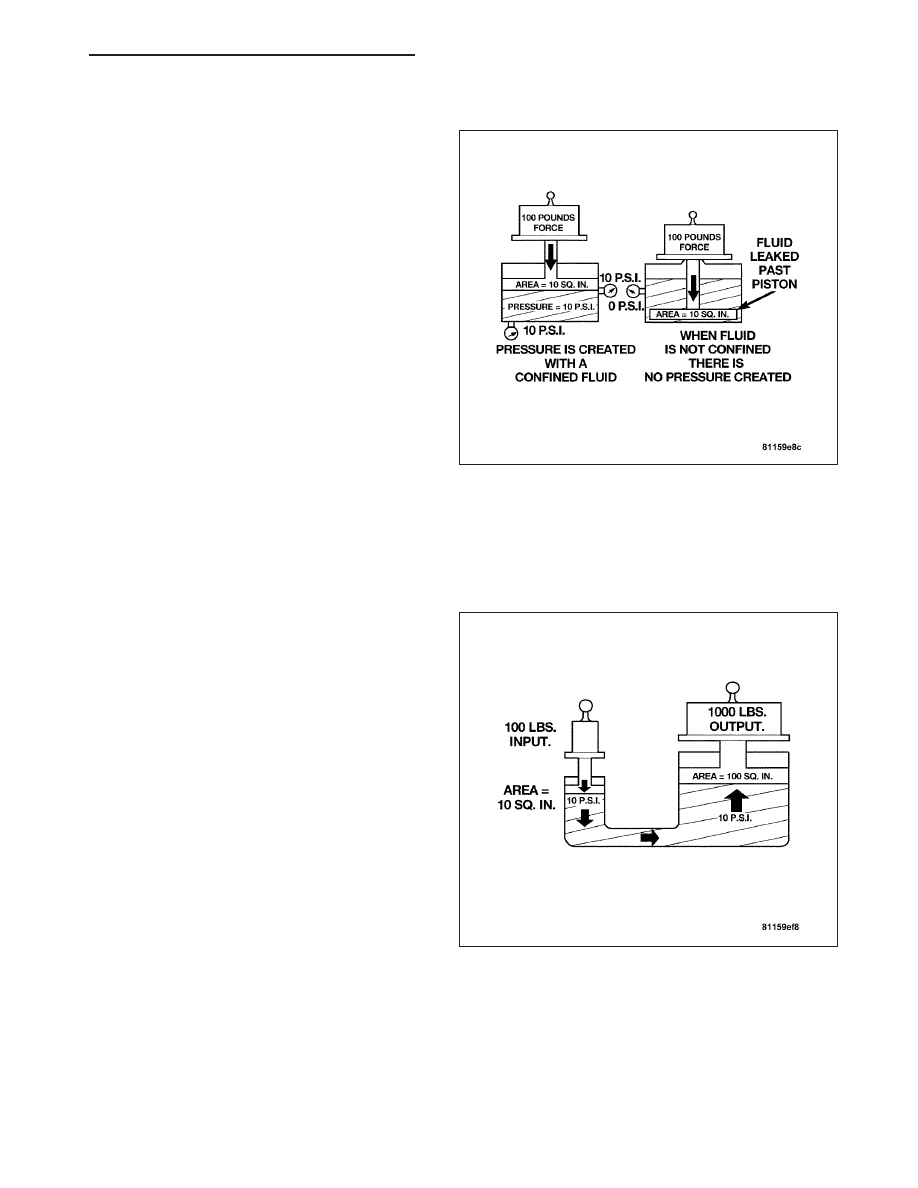Chrysler Crossfire. Manual - part 796

PRESSURE ON A CONFINED FLUID
Pressure is exerted on a confined fluid by applying a
force to some given area in contact with the fluid. A
good example of this is a cylinder filled with fluid and
equipped with a piston that is closely fitted to the cyl-
inder wall. If a force is applied to the piston, pressure
will be developed in the fluid. Of course, no pressure
will be created if the fluid is not confined. It will simply
“leak” past the piston. There must be a resistance to
flow in order to create pressure. Piston sealing is
extremely important in hydraulic operation. Several
kinds of seals are used to accomplish this within a
transmission. These include but are not limited to
O-rings, D-rings, lip seals, sealing rings, or extremely
close tolerances between the piston and the cylinder
wall. The force exerted is downward (gravity), how-
ever, the principle remains the same no matter which
direction is taken. The pressure created in the fluid is
equal to the force applied, divided by the piston area.
If the force is 100 lbs., and the piston area is 10 sq.
in., then the pressure created equals 10 PSI. Another
interpretation of Pascal’s Law is that regardless of container shape or size, the pressure will be maintained through-
out, as long as the fluid is confined. In other words, the pressure in the fluid is the same everywhere within the
container.
FORCE MULTIPLICATION
Using the 10 PSI example used in the illustration, a
force of 1000 lbs. can be moved with a force of only
100 lbs. The secret of force multiplication in hydraulic
systems is the total fluid contact area employed. The
illustration shows an area that is ten times larger than
the original area. The pressure created with the
smaller 100 lb. input is 10 PSI. The concept “pressure
is the same everywhere” means that the pressure
underneath the larger piston is also 10 PSI. Pressure
is equal to the force applied divided by the contact
area. Therefore, by means of simple algebra, the out-
put force may be found. This concept is extremely
important, as it is also used in the design and opera-
tion of all shift valves and limiting valves in the valve
body, as well as the pistons, of the transmission,
which activate the clutches and bands. It is nothing
more than using a difference of area to create a dif-
ference in pressure to move an object.
ZH
AUTOMATIC - NAG1 SERVICE INFORMATION
21 - 333